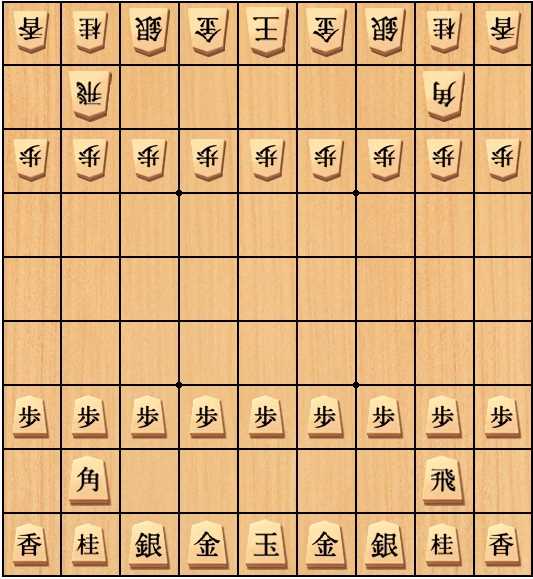
Introduction
If you line up a complete Shogi and Chess set together, you’ll notice that the games look somewhat similar; to some extent they are. If you already understand Chess, you’ll have a great head start in becoming a proficient Shogi player, yet, there are a couple of substantial changes that can make it an altogether separate game. For these reasons pitting Shogi vs Chess in a comparative article seems like a great way to understand and appreciate the differences in each.
I will be comparing everything from pieces and move-sets to strategies and formations.
Quick selection
- Shogi vs Chess
- — A basic guide
- — Shogi formations and sections
- — Shogi pieces and moves
- — Attacking and taking pieces
- — Strategies and play-styles
- Lets play some Shogi
Shogi vs Chess
A basic guide
Japanese Shogi is a two player game where each player controls a set of 20 5-sided pieces on a 9×9 grid. Each piece has a movement range, should an opponent’s piece fall within this range, it can be attacked or ‘taken’. The most important piece is the ‘King’ and should your opponent’s fall into your attacking range without a means to escape, you win the game.
The goal then is exactly the same and is why Shogi is commonly referred to as Japanese Chess.
You may notice that Shogi has 20 pieces per player rather than 16 and the board is slightly larger, but there are bigger aspects that deserve attention and further deviate from traditional Chess that will help us understand Shogi. These are:
- Formations and Sections
- Moves and pieces
- Taking Pieces
- Additional opportunities
Shogi formations and sections
The 9×9 rectangular Shogi board is split into three zones, each player controls 3 rows or a third of the board and the middle 3-rows or third being the ‘neutral’ zone if you will. The importance of this seemingly trivial fact should not be understated as it forms a key part of the game.
The starting formation within a player’s third may seem a little odd compared to Chess which is Straightforwardly two rows of symmetrically aligned pieces.
Shogi is not.
What you’ll find here is that the 1st and 3rd rows are quite conventional whereas the 2nd has only two alternate pieces.
A diagram may show this better.


This formation in Shogi bears resemblance to a battle formation, in fact, many other parts of the game reference and take inspiration from wartime characteristics. This is where another usage of the player thirds comes into play.
If one of the player’s pieces manages to move into an opponent’s third of the board (the top three rows), then that player can choose to ‘promote’ it. Promoting a Shogi piece means that the moveset is upgraded beyond its normal capabilities and can provide significant advantages for the rest of the game.
This is where the game starts to deviate from Chess. Promotion is possible in Chess too, however, it is limited to just the pawn, and it must also reach the back row of the opposing team to do so. In reality promotion in Chess is quite rare as it would normally happen incredibly late in the game. If it did occur it would result in an even faster defeat. Resignation before it even occurs is also common.
In Shogi, promotion is incredibly common and much easier to achieve.
Shogi pieces and moves
In Shogi you play with a set of 5-sided wooden blocks with the only distinction between them being the symbols printed on the surface. The symbols are often Japanese Kanji and will give an indication of the moveset of each piece.
If we contrast this with a normal Chess set which are visually distinctive; it may take a little longer to be able to recognise and remember the moveset of each Shogi piece during a game.
What’s more, Western Chess has six different pieces, while Shogi has 8 as standard but this can change to even more during a game. (More on this shortly). Luckily you don’t necessarily need to know the kanji to play. Most of the Shogi pieces have a corresponding English name that is often used; some may even be familiar as they are the same names used in Chess.

Despite having to learn more move sets this can also expand the number of strategies you can deploy. Here’s a rundown of the movement range of each piece.

We mustn’t forget however that Shogi pieces can be promoted and the move sets can change. Promotion is visually achieved by turning the piece over.

Attacking and taking pieces
Attacking and taking opponents’ pieces in Shogi works in an identical fashion to that of Chess. If it is within movement range, you can move to the space the opponent’s piece occupies and ‘take’ it.
However, with Japanese Shogi the word ‘take’ has a whole other level.
When you do so in Shogi, you capture the piece and place it on a surface next to the board. It is then referred to as being ‘in-hand’. At any time during the game on your turn, you can play any piece that is ‘in-hand’ essentially converting it to your side. What’s more, if you have already broken into your opponent’s third at least once, you can even place within your opponents territory which could be classed as ‘behind enemy lines’.
This is a huge gameplay element that simply does not exist in Chess and refers back to wartime characteristics. In Japan, when samurai were captured they would often defect to the enemy’s side in order to avoid death.
Strategies and play-styles
We’ve now covered some of the most important aspects of Shogi and how they differ from Chess. You may be able to recognise how some of their differences can heavily dictate how the game is played.
Let’s take a look at comparing strategies and how priorities can change due to the different rules of the game.
In Chess, piece value and retention is a key aspect. In most cases, once they are lost there is little chance of gaining another or of them returning. ‘Trading’ can be an option if point values sway heavily in your favor but it is your total point combination on the board versus your opponents that can determine a game. Moreover, positioning is important in Chess such as controlling central positions on the board.
While these things do apply in Shogi they may not necessarily play as important of a role. The act of placing ‘in-hand’ pieces where you need them can alleviate some positioning woes. Likewise, actively ‘trading’ pieces may even become viable in order to return them to the game in a favorable position.
Along with the in-hand placements, promotion zones, and movement variations it can be viable to perform strategies such as:
- Rushing (to unlock promotion zone)
- Defensive wall (using silver and gold generals)
- In-hand placement sneak (behind opponent formations)
These are strategies that Chess couldn’t employ as it forces you to be adaptive, focus more on defense, and even be aware of pieces that are not on the table.
You might also be interested in:
Get started with Origami: the Japanese paper folding craft
Lets play some Shogi
Now this would all be rather insignificant if there were no way of playing Shogi for yourselves.
Luckily that’s not the case here.
You can either go about finding a physical Shogi set or play Shogi online through an app which might be easier, cheaper and more accessible — at least if you just want to try it out. There are a few apps available on both apple and google play store as well as free websites such as Lishogi.org (don’t worry I’ve already tried it out).
If you do want to invest in a physical set you may have a hard time finding shops in the UK that will sell it, however, your best place then would be to go to Amazon (paid link).
Conclusion
Shogi is a Japanese game that will feel very familiar. Whilst first appearances can be daunting, it truly doesn’t take long to learn the moves and familiarize yourself with the pieces and additional options — There is no need to know kanji.
For me, Shogi feels like a step-up from Chess. Everything you know in Chess can be performed in Shogi; not everything you know in Shogi can be performed in Chess.
That’s not to say it is outright better.
There’s more to consider but that maybe makes it more complicated. Shogi feels more forgiving and open to tactical variation but could also be argued less skill is needed.
Either way Japanese Shogi is a game remarkably similar to Chess, yet can make you think and play entirely differently. So why not give it a go and make that decision?
Nathan

